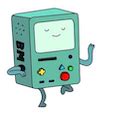Adventure Code

Personal blog
How Emotions Are Made - by Lisa Feldman Barrett, 2016

High level overview of the book:
Presents two emotion theories:
- the classical theory of emotions does not stand up to evidence anymore
- a new theory of constructed emotions is a better fit to the scientific evidence
- and also provides useful tools to think about emotions and improve our lifes
Advices:
- if emotions are constructed, you are in part responsible for what you feel and how you interpret the world
- work on your emotional granularity, rich set of concept is toolbox for a meaningful life
- reframe emotions and situations, deconstructing the self - is this causing me real physical harm or it's just a threat to my ego/self
- everything we feel and do is influenced by our body budget (hungry,tired,in pain)
- balance your body budget by eating healthy, sleeping enough and exercising
- watch out for the mental inference fallacy - attribute mental state to physical behavior
- a mental state can have vastly different manifestations
Classical Theory of Emotions - Essentialism
- states that emotions are localized to individual parts of the brain (e.g.the fear circuit/network) - one-to-one mapping
- however a metastudy found no consistent emotional fingerprints in the brain - no dedicated circuit
- each instance of an emotion can vary a lot, using different brain parts
- states that emotions are the reactions of the brain to a certain situation
- reactive brain would be metabolically less efficient than a predicting/correcting brain
Categories
- classical category - prototype, traits
- a bird - has feather and wings and can fly - almost every instance fits the description, all physically similar
- funcitonal category - abstract, goal based
- things that have value and can be used to exchange goods - money, real estate, salt
- things that protect you from the rain - umbrella, roof, a dont-care attitude
- instances can be vastly different physically, but they are united by the abstract concept of serving the same funcionality/goal
- these categories are human constructed - we impose meaning on the phyisical objects and have a common agreement on it
Constructed Emotions Theory
- an emotion - is a funcional category
- it is a collection of diverse instances, mental events (such as fear) are not created by only one set of neurons, but different combinations of neurons can create instances of fear (multipurpose neurons)
- the brain is constanly predicting - anticipating the best guess of what's going on - and how to keep you alive and well
- the brain uses concepts (past experience) to make sense of internal & external stimuli
- an emotion - is the brains creation of what your bodily sensations mean in relation to whas going on around you
Affective realism
What you feel alters whay you see and hear, and not the other way around
Affect composed of two main factors:
- the body's energy bugdet (hunger, tiredness, pain)
- interoceptive feelings (pleasant/unpleasant and calm/jittery-excited)
- pressure on skin has calming effect (hug, weighted blanket)
- soft touch results in excitement (tickling)
Affectice realism - affect can mislead us, we can misjudge the world:
- hungry judges rule harsher sentences - they precieve the crimes as more serious incorrectly
- flu on a date might make you have fever and stomach pain - which you can misinterpret as blushing and butterflies
You might like to think you are a purely rational being, but interoceptive feeling influence your every decision
Constructing emotions = making affect meaningful
-
the brain makes a lot of predicitions with different probabilities (based past experience and sensations)
- these predictions compete to explain what causes the sensations and determine how you feel/act/percieve
- the most probable prediction becomes your perception
- emotions are meaning
- they prescribe an action - to cope, improve survival
- they communicate, influence others
-
successful communication is based on synchronized emotional concept prediction - same goal and same situation
-
helps with the human strugge - getting ahead vs getting along (benefit yourself or please others)
Babies and learning
Small children think their preferences are everyones preferences (if they like chocolate, everyone like chocolate)
- they think everyone thinks the same/knows the same/preferes the same
- as they grow, they learn to do mental inference
- recognize that others have different knowledge in their had, which can be accesses through speech/words
Words are powerful, they label reality and point out similarities (beyond the physical)
- words allow to create purly mental concepts, which can be used to control your body budget and survive
- some of these mental concepts are emotions, which serve as explanations for feelings/deeds and communication
Social reality - a human superpower
If a tree falls and no one is around to hear it does it make a sound?
- it does, but that sound cannot be interpreted as a tree falling without a human brain
- tree falls -> air pressure changes -> ear -> brain that knows the concept of tree, has experience of trees falling, so it is not experiencially blind to it
Phyisical reality vs Constructed experiences (social reality)
- the latter only exists for those who are equipped to percieve it (concepts, past experience)
- just give it a name and make people agree on it and it becomes real (in a social sense) - imposing meaning
How do emotions become real
- people need to agree on the concepts, shared understanding - anger exists with a certain function
- language - is an effective tool to wire each other's brain, words help grouping into concepts